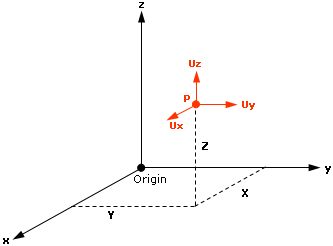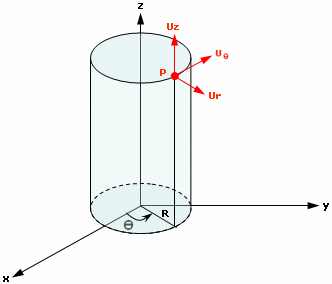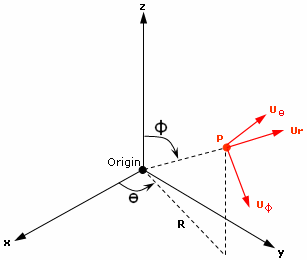Coordinate System | ||||
|
| |||
Cartesian Coordinate System
The components are defined relative to a fixed rectangular coordinate system aligned with the Cartesian coordinate directions of the axis.
The axis is built locally at any point P of the support as shown below:
![]()
Cylindrical Coordinate System
The components are interpreted in a local variable rectangular coordinate system. This local coordinate system is aligned with the specified cylindrical coordinate system.
The axis is built locally at any point P of the support as shown below:

- Uz is collinear to z, where z represents the revolution axis of a cylinder.
- Ur and UΘ are respectively the radial and tangential components in the plane which is perpendicular to the z axis.

![]()
Spherical Coordinate System
The components are interpreted in a local variable rectangular coordinate system. This local coordinate system is aligned with the specified spherical coordinate system.
The axis is built locally at any point P of the support as shown below:

The origin of the local axis system is at the node of interest
(P). So for each node of the support, a local axis is
built.
Ur, UΘ and UΦ are respectively the
radial, circumferential and meridional components.